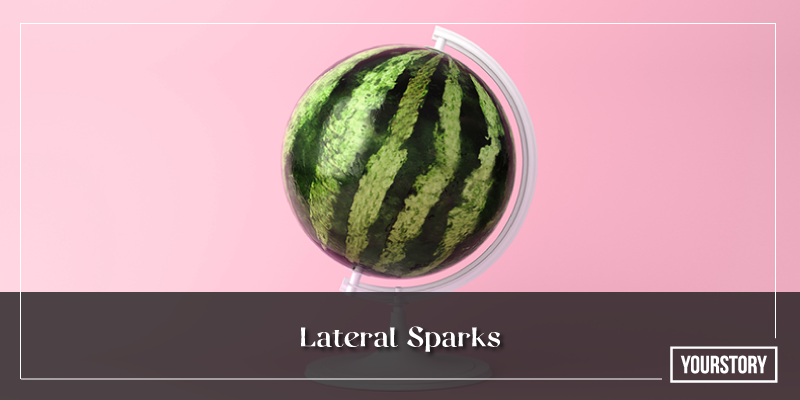[Photo Sparks] Maths is fun: Google and the Museum of Mathematics in New York city!
In earlier posts, we brought you creative photographs of art fairs, telecom products, music festivals, mobile projects, social hackathons and bookstores. In this photo essay, we take you to the amazing Museum of Mathematics in New York city, funded by companies such as Google. Make YourStory’s PhotoSparks your regular source of photographs that celebrate creativity and innovation!

More maths, more fun
The Museum of Mathemathics (MoMath) is one of the newer additions to New York city’s stellar collections of museums. Founder and executive director Glen Whitney hopes to “make math fun” and even entertaining for all visitors – children as well as adults. MoMath opened its doors in December 2012 and has raised over $22 million so far, starting off with an early $2 million grant from Google. MoMath “strives to enhance public understanding and perception of mathematics” via exhibits and programs that “stimulate inquiry, spark curiosity and reveal the wonders of mathematics.”

Interactive immersive mathematics
Mathematics illuminates the objects, patterns and structures around us. The founding team realised there was no museum of mathematics in the US, and yet there was demand for creative education about maths. Glen Whitney was a hedge-fund quantitative analyst who devoted himself to the MoMath project to show people “the breadth and the beauty and the creativity that are inherent in mathematics.” Summer programs show the connections between mathematics and art, music and dance, and include exhibits where visitors can sit on rotating chairs and watch as strings take on different shapes as they swivel.

2-D or 3-D?
This exhibit looks like a sheet of metal plates from a distance, but is actually a collection of holograms by artist Matthew Brand. Objects such as knots and ropes are represented in flat etched-metal plates as specular holograms, made of thousands of dots of light that bounce off finely carved metal or glass.

Specular holograms
When illuminated by light beams, the holograms reveal 3-D images of the objects, almost like a scene straight out of a sci-fi movie. The museum shows that mathematics can be seen and physically experienced, and is not just interesting but also fun and exciting.

Who said wheels always have to be round?
In this exhibit, the child is riding a tricycle with square wheels! The ride is actually quite smooth, because the riding surface is a series of radial curves and indents. Media coverage of MoMath has been enthusiastic, with some even calling it a “hi-tech high-concept playground” which is the “antidote to math phobia.”

Unmatched art!
Don’t throw away your next match after you light it - here’s a bowl you can make from matches! You can actually make intricate pieces of art from tiny sticks of wood, whether they are matches or other kinds of construction material. In an increasingly tech-driven society, MoMath hopes to enable visitors understand the evolving, creative, human, and aesthetic nature of mathematics.

Sticks and spirals
You can make elaborate 3-D models as well with matchsticks, and some artists have even made models of churches and the Taj Mahal with matchstick art! Other exhibits at MoMath include a two-story parabola, a cafe for families to sit together at special tables and solve problems together, and a Matheneum or area for visitors to design 3-D objects.

Visible math in architecture
MoMath hopes to transform math concepts into 3-D “hands-on experience,” thanks to inputs from a team of designers and experts from the museum industry. Geometric objects and building models are easier to adapt to an exhibit format, such as the optical illusion of long pairs of parallel lines which seem to come together in the middle. Some of the exhibits capture the visible mathematical wonders from bridges such as the Golden Gate or Verrazano bridges and the St. Louis Gateway Arch.

Maths in nature
Nature can be an effective teacher of mathematical concepts. For example, sunflowers show breathtaking patterns of spirals. If you count some of the spirals in a consistent manner, you will find a Fibonacci number: 0, 1, 1, 2, 3, 5, 8, 13, 21, 34, 55, and so on. Look online for ways of unveiling the spiral patterns in the picture above.

Mathematically significant donations
True to its mathematical roots, even the Museum’s donor program has specific grant amounts based on mathematically significant numbers. Those who donate at least a six-figure amount are called Prime Sustainers - and if you donate more than a million dollars, you will be classified in the Exponential Benefactor category!
Got a good creative inspirational photograph to share? Email us at [email protected]!






![[Photo Sparks] Maths is fun: Google and the Museum of Mathematics in New York city!](https://images.yourstory.com/cs/wordpress/2014/08/PhotoSparks2.jpg?mode=crop&crop=faces&ar=2:1?width=3840&q=75)




